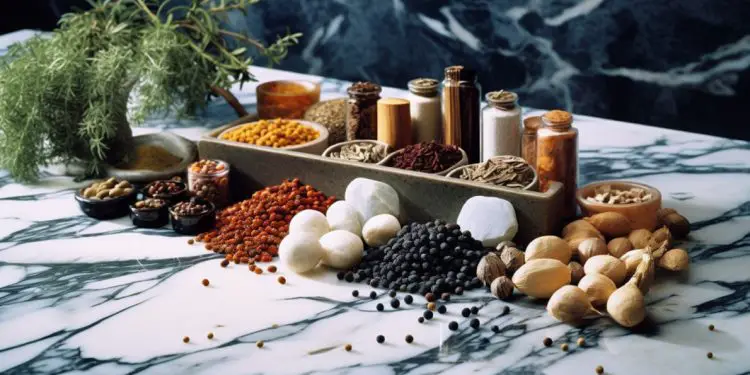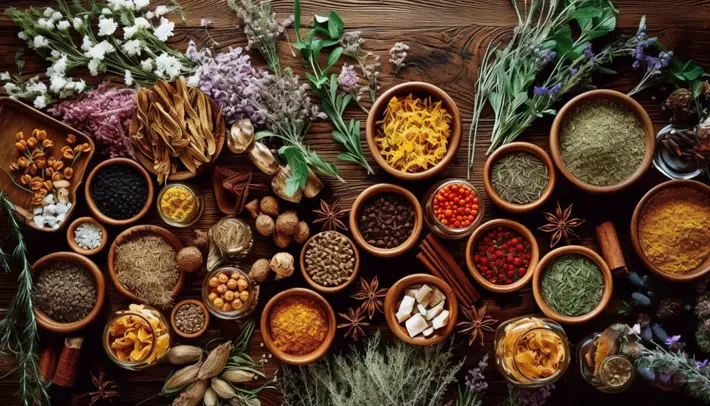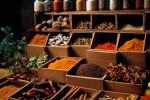Spice it Up: Tips for Cooking with Herbs and Spices

Herbs and spices are essential ingredients that can take your cooking to the next level, adding depth, flavour, and complexity to even the simplest dishes. They can turn a bland dish into a delicious one, and a good dish into an unforgettable one. In this article, we’ll explore the world of herbs and spices, and show you how to use them to make your meals more flavourful, aromatic, and satisfying.
Whether you’re a seasoned cook or just starting out in the kitchen, understanding how to use herbs and spices is a crucial skill. They can be used to enhance the flavours of your favourite dishes, and even create new and exciting flavour combinations. From sweet and floral herbs like basil and thyme, to savory and pungent spices like cumin and coriander, there’s a wide range of herbs and spices to choose from, each with its unique flavour profile and health benefits.
In this article, we’ll share some essential tips and tricks to help you get the most out of your herbs and spices. You’ll learn how to choose the right herbs and spices for different dishes, how to store them properly, and how to use them to create delicious and healthy meals. So, let’s dive in and explore the wonderful world of herbs and spices!
Understanding Herbs and Spices
Herbs and spices are the secret ingredients that can take your dishes to the next level. They add depth and complexity to even the simplest of meals like rice (get a packet here: carolinarice.com/products/white-rice/). In this section, we’ll dive into the world of herbs and spices, exploring the different types and what makes each one unique. From fragrant basil to earthy cumin, we’ll take a closer look at the flavours and aromas that each herb and spice brings to the table. We’ll also explore the different dishes that each herb and spice is traditionally used in, giving you a better understanding of how to use them in your own cooking. Whether you’re a seasoned chef or a beginner in the kitchen, understanding herbs and spices is a crucial step towards elevating your culinary creations.
How to Buy and Store Herbs and Spices
When shopping for herbs and spices, it’s important to consider the quality and freshness of the product. For the best results, look for whole spices and dried herbs with vibrant colours and strong aromas. If buying ground spices, make sure the package has an airtight seal and check the expiration date to ensure freshness. Avoid purchasing spices in bulk unless you plan to use them quickly, as they will lose flavour and aroma over time.
Once you’ve brought your herbs and spices home, it’s essential to store them properly. Heat, light, moisture, and air can all cause herbs and spices to lose flavour and aroma, so it’s best to keep them in a cool, dark place. A spice rack or cabinet is an excellent option, but you can also store them in airtight containers in a pantry or cupboard. Avoid storing herbs and spices above the stove, as the heat and steam can cause them to deteriorate more quickly.
When storing herbs and spices, it’s important to label them with the date of purchase or the expiration date. This will help you keep track of how long you’ve had them and when they need to be replaced. Ground spices should be replaced every six months to a year, while whole spices can last up to three years if stored correctly. Dried herbs typically have a shorter shelf life and should be replaced every six months.
Using Herbs and Spices in Cooking
When it comes to using herbs and spices in cooking, it’s all about finding the right balance of flavours. Too much of a single spice can overpower a dish, while a thoughtful combination of spices can create complex and delicious flavours.
One important tip for using herbs and spices is to add them early on in the cooking process. This allows their flavours to meld with the other ingredients in the dish. For example, herbs like thyme, rosemary, and bay leaves are perfect for adding to stews and soups at the beginning of the cooking process to infuse the dish with their flavours.
Spices, on the other hand, can be added at various stages of cooking. Ground spices like cumin, coriander, and chili powder can be added to sauces or marinades to give them depth and complexity, while whole spices like cinnamon sticks, star anise, and cardamom pods can be added to rice dishes or simmering curries to infuse the dish with their flavours.
When it comes to balancing flavours, it’s important to remember that some herbs and spices are more potent than others. For example, cumin has a strong, earthy flavour that can easily overpower a dish, while cinnamon has a sweet and spicy flavour that can add depth to desserts and savory dishes alike. It’s important to use these spices in moderation, and to taste your dishes as you go to ensure that the flavours are balanced and not overpowering.
To get you started, here are a few example recipes using herbs and spices:
1. Moroccan Spiced Chicken with Couscous: This recipe uses a blend of spices like cumin, coriander, and cinnamon to give the chicken a warm and earthy flavour. The couscous is also flavoured with herbs like parsley and mint, making for a flavourful and satisfying meal.
2. Garlic and Herb Roasted Pork Tenderloin: This simple recipe uses fresh herbs like rosemary and thyme, as well as garlic, to give the pork a delicious and savory flavour. Serve it alongside roasted vegetables for a complete meal.
3. Chai Spiced Oatmeal: For a delicious breakfast or snack, try this recipe for chai spiced oatmeal. It uses spices like cinnamon, cardamom, and cloves to give the oatmeal a warm and comforting flavour that’s perfect for chilly mornings.
In conclusion, herbs and spices are essential ingredients in cooking that can elevate dishes to new heights. They add depth, complexity, and balance to flavours, making every meal more satisfying and enjoyable. With the right knowledge and techniques, anyone can use herbs and spices to enhance their cooking and create memorable dishes. We hope that this article has provided you with valuable insights and tips on how to buy, store, and use herbs and spices. We encourage you to try out new recipes and experiment with different types of herbs and spices to discover your own unique flavour combinations. So, go ahead and spice it up in the kitchen!










